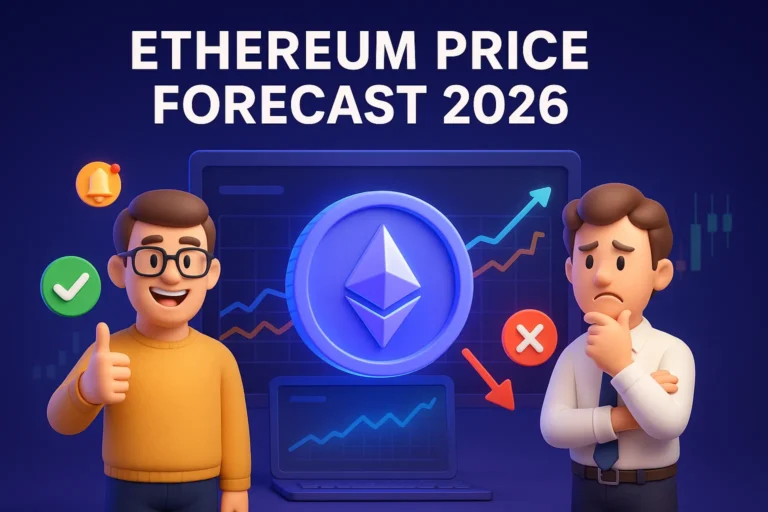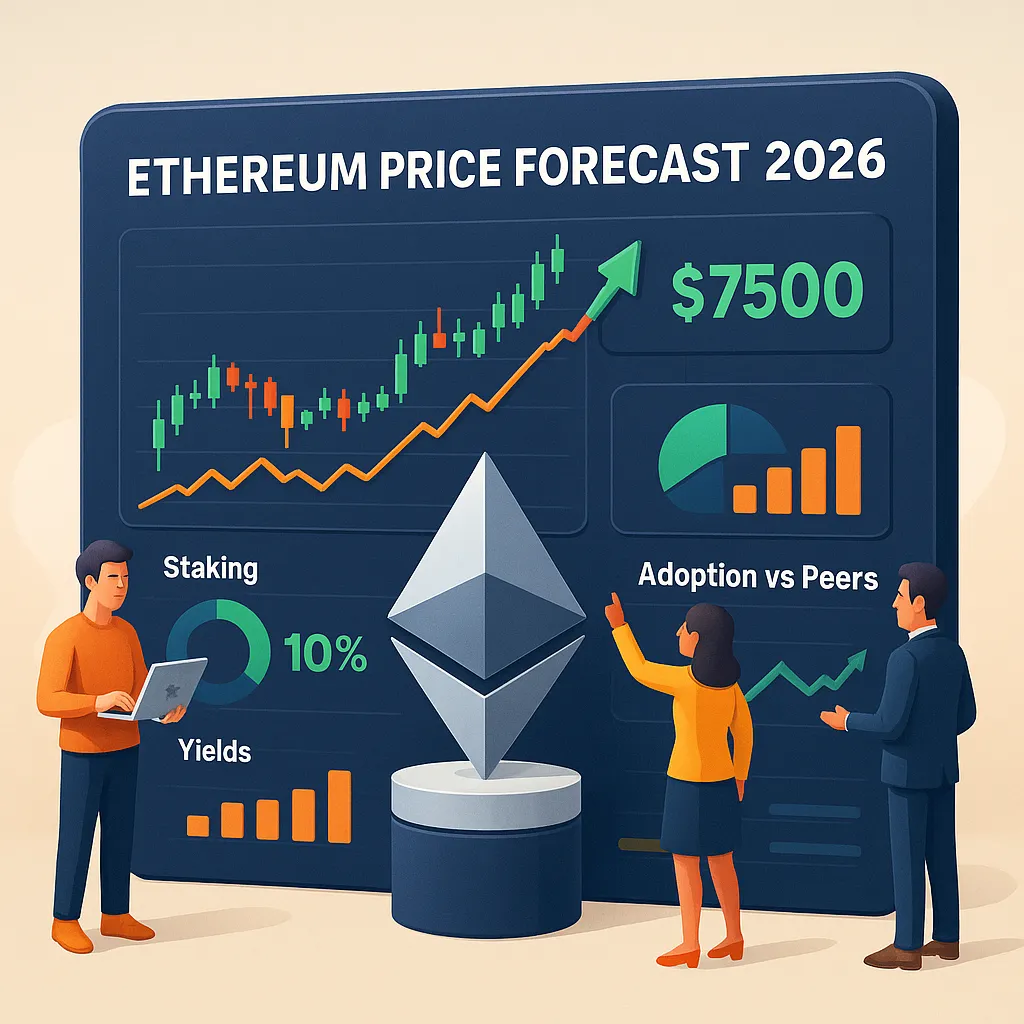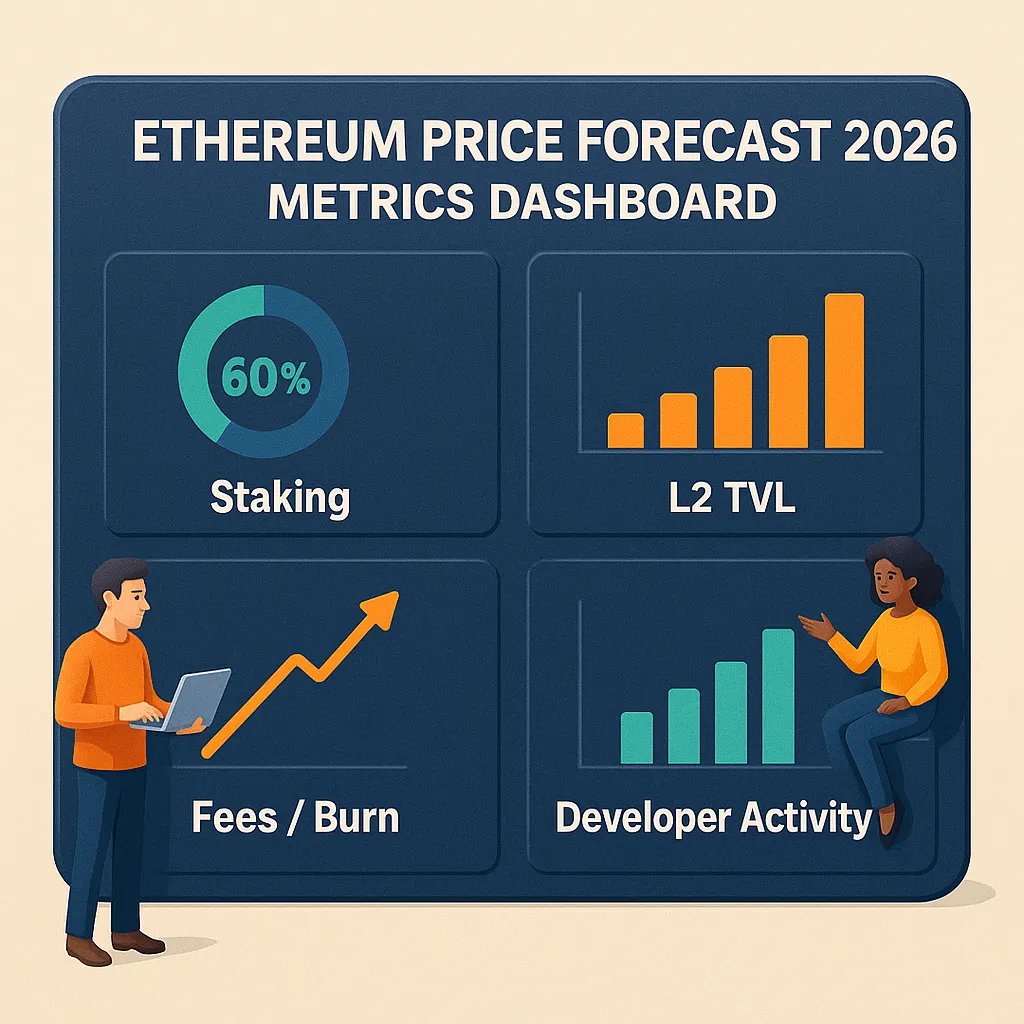
Ethereum Price Forecast 2026: 7 Powerful Pros and Cons for Investors
In this data-driven Ethereum price forecast 2026, we weigh seven powerful pros and cons that could shape ETH over the next cycle—staking yields, scaling progress, adoption trends, and the broader Ethereum vs Bitcoin outlook. If you’re allocating to ETH, this guide helps you separate signals from noise.
We’ll map scenarios for ETH long-term price outlook, stress-test assumptions about Ethereum 2.0 adoption, and outline how Ethereum future predictions intersect with macro liquidity, on-chain activity, and developer momentum—so you can position early, not late.
Ethereum at a Glance: 7 Powerful Pros and Cons

Before we dive into models and adoption curves, let’s frame ETH with a simple scorecard. Every Ethereum price forecast 2026 must balance its pros and cons—from bullish tailwinds like staking rewards and scaling, to risks like regulation, liquidity cycles, and Ethereum vs Bitcoin outlook. Here’s a breakdown investors can’t ignore.
- Staking yields provide consistent returns via ETH 2.0.
- L2 scaling boosts adoption and reduces fees.
- Largest developer ecosystem, unmatched by other altcoins.
- Strong institutional recognition as a top best altcoin investment 2026.
- Gas fees still volatile without broad L2 adoption.
- Competition from Solana, Cardano, and emerging L1s.
- Regulatory headwinds could slow staking growth.
- ETH long-term price outlook sensitive to liquidity cycles.
- Staked ETH: % of total supply locked in staking contracts.
- L2 TVL: Growth of rollups like Arbitrum, Optimism, zkSync.
- Developer Activity: GitHub commits, upgrades, and tooling growth.
- Macro Drivers: Liquidity cycles, Fed policy, global risk appetite.
Useful resources: Ethereum 2.0 Overview (dofollow), L2 Scaling Data (nofollow), DeFiLlama Metrics (dofollow).
Related reading: Crypto Trading Strategies, Day Trade Alerts.
Core Drivers & On-Chain Metrics for Ethereum Price Forecast 2026

A credible Ethereum price forecast 2026 rests on measurable inputs. Below are the high-signal metrics we track and how they map to ETH valuation under different liquidity regimes.
🪙 Staking Participation & Yield
Higher % of supply staked reduces float and can support price. Watch net staking flows, real yield after fees, and Ethereum staking rewards forecast under varying validator economics.
🧱 L2 Scaling & TVL
Sustained growth on rollups (Arbitrum, Optimism, zkSync, Base) signals healthy demand. Rising L2 TVL and users strengthen the ETH long-term price outlook by pushing activity to cheaper layers.
🔥 Fees, Burn & Net Issuance
Net issuance = staking rewards − burned fees. Elevated activity increases burn, supporting the thesis for supply-side pressure into 2026.
👨💻 Dev Velocity & Upgrades
Commits, client diversity, and upgrade cadence (data availability, L2 improvements) underpin Ethereum 2.0 adoption and ecosystem resilience versus alternatives.
🌊 Macro Liquidity & BTC Pair
Inflows/outflows across risk assets and the Ethereum vs Bitcoin outlook drive relative performance. Track dollar liquidity proxies, rates, and BTC.D dominance.
How to Turn Metrics into an Actionable Playbook
- Define regimes: Risk-on vs risk-off. Adjust ETH allocation and position sizing accordingly.
- Monitor a dashboard: Staked % supply, L2 TVL, burn/issuance, dev updates, liquidity signals.
- Set triggers: Thresholds for adding/reducing exposure (e.g., L2 TVL trend, fee burn spikes).
- Diversify timing: DCA core exposure; reserve a tactical sleeve for event-driven moves.
- Risk rails: Pre-commit to max drawdown, stop placement, and portfolio heat limits.
📈 Want a weekly ETH dashboard with these metrics and trade setups?
Get Our Crypto Trade AlertsReferences: Ultrasound.money (ETH burn/issuance) (dofollow), L2BEAT TVL (nofollow), DeFiLlama – Ethereum (dofollow).
2026 Scenarios, Risk Matrix & Allocation Ideas

Turning an Ethereum price forecast 2026 into action means stress-testing assumptions. Below is a simple scenario map—bull, base, and bear—anchored on on-chain and macro inputs.
| Scenario | Assumptions | Signals to Watch | Positioning Ideas |
|---|---|---|---|
| Bull | L2 TVL accelerates, fees/burn high, net issuance ≤ 0; favorable liquidity, constructive regulation. | Rising L2 users & TVL, burn > issuance, improving risk appetite, ETH/BTC strength. | Overweight core ETH; add momentum/trend overlays; consider selective L2 exposure. |
| Base | Steady L2 growth, moderate fees/burn; mixed macro; regulation status quo. | Stable staking %, sideways ETH/BTC, contained volatility, neutral liquidity. | Neutral weight; DCA core; keep a tactical sleeve for catalysts and rebalancing. |
| Bear | L2 growth stalls, fees/burn fall, higher net issuance; risk-off macro; regulatory pressure. | Dropping activity metrics, ETH/BTC weakness, wider credit/rates stress, falling TVL. | Underweight; hedge beta; raise cash/short-duration stables; use strict risk limits. |
Risk Matrix: What Can Go Right/Wrong
- Technology: + Faster L2s & data availability; − Client bugs or upgrade delays.
- Adoption: + DeFi/real-world assets growth; − User leakage to cheaper L1s.
- Tokenomics: + High burn/low issuance; − Lower activity → net inflationary periods.
- Regulation: + Clear staking rules; − Enforcement chills U.S. participation.
- Macro: + Liquidity expansion; − Higher-for-longer rates compress risk premia.
Allocation Framework by Risk Profile
Small core ETH (DCA), strict drawdown cap, hedges in risk-off. Focus on on-chain signals before adding.
Core + tactical sleeve for events (upgrades, L2 milestones). Rebalance to volatility targets.
Overweight ETH in bull regimes; momentum/trend filters; accept higher drawdown variability.
FAQs & Final Verdict: Is Ethereum the Best Altcoin Investment for 2026?
Our expanded Ethereum price forecast 2026 highlights the undeniable strengths of Ethereum as well as the risks that every investor must weigh. With staking yields, strong developer activity, and rapid L2 adoption, Ethereum looks positioned for long-term growth. Yet, volatility, regulation, and competition from other chains remain factors that could impact ETH’s trajectory. Below we address the most pressing investor questions.
Frequently Asked Questions
1. What is the Ethereum price forecast for 2026?
Our base case Ethereum price forecast 2026 suggests ETH could remain one of the top-performing assets in crypto, provided L2 scaling continues and staking participation grows. Price ranges vary depending on macro conditions, but the outlook favors steady growth with upside potential in bullish environments.
2. How does Ethereum compare to Bitcoin going into 2026?
The Ethereum vs Bitcoin outlook shows ETH has a stronger case in activity-driven markets, where fees and staking matter. Bitcoin still leads as digital gold, but Ethereum captures value from transactions, smart contracts, and applications. Many investors hold both to balance store-of-value stability with growth exposure.
3. Will Ethereum staking rewards remain sustainable?
Based on our Ethereum staking rewards forecast, yields may compress as staking participation increases. However, the long-term sustainability of staking rewards combined with fee burn means ETH can still provide consistent “real yield” compared to traditional assets.
4. What risks could derail Ethereum’s 2026 performance?
Key risks include: high gas fees if L2 adoption slows, regulatory headwinds targeting staking or DeFi protocols, and liquidity cycles in global markets. Competition from newer blockchains may also chip away at Ethereum’s dominance if they offer faster and cheaper alternatives.
5. Is Ethereum still the best altcoin investment for 2026?
ETH remains one of the strongest contenders for the title of best altcoin investment 2026. Its developer ecosystem, fee burn mechanism, and institutional adoption give it a unique position. However, investors should size positions according to risk tolerance and avoid overexposure to one asset class.
Final Thoughts
The ETH long-term price outlook is promising but complex. On the bullish side, deflationary supply, growing staking participation, and enterprise adoption could propel ETH to new highs. On the bearish side, unfavorable regulations or a global liquidity squeeze could limit upside.
For most investors, the best approach is a diversified allocation—holding ETH alongside Bitcoin and a basket of altcoins—while actively monitoring Ethereum future predictions and on-chain metrics. This ensures flexibility in adapting to market cycles and technological shifts.
In short, Ethereum deserves serious consideration in any crypto portfolio heading into 2026. Whether as a long-term hold or a tactical trading asset, ETH provides opportunities that align with different investor profiles.
🚀 Ready to act on the latest Ethereum price forecasts and crypto market signals?
Get Real-Time Crypto Trade Alerts